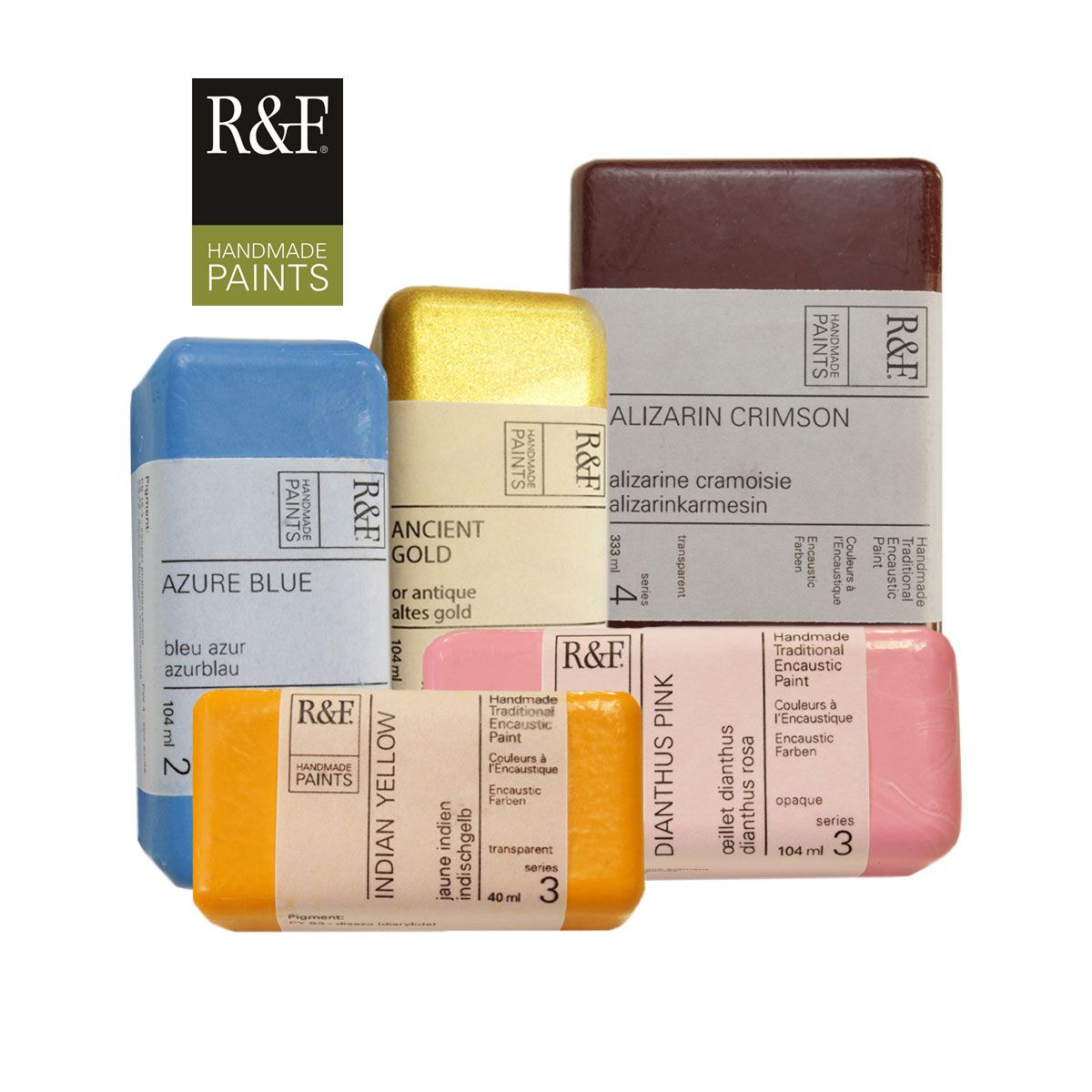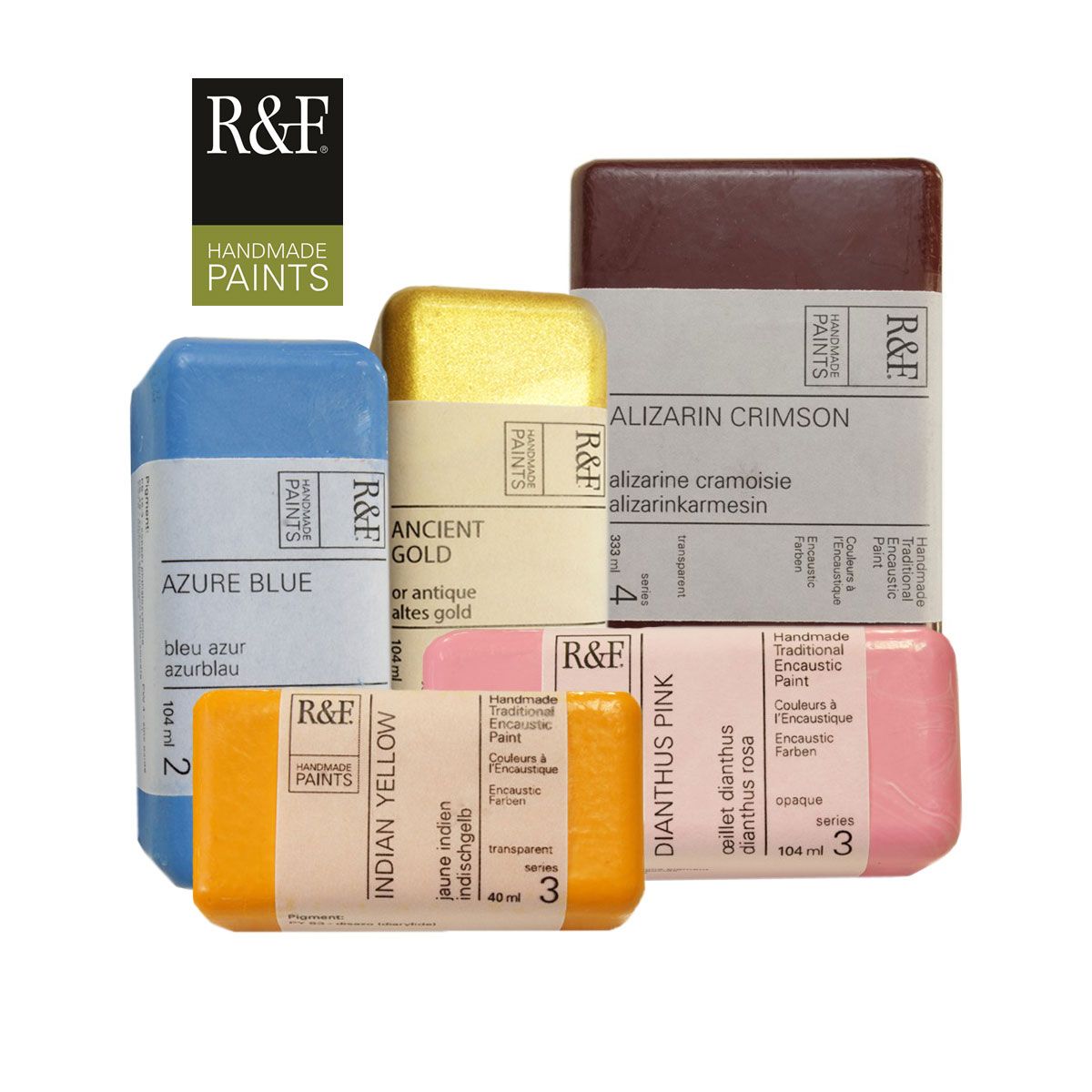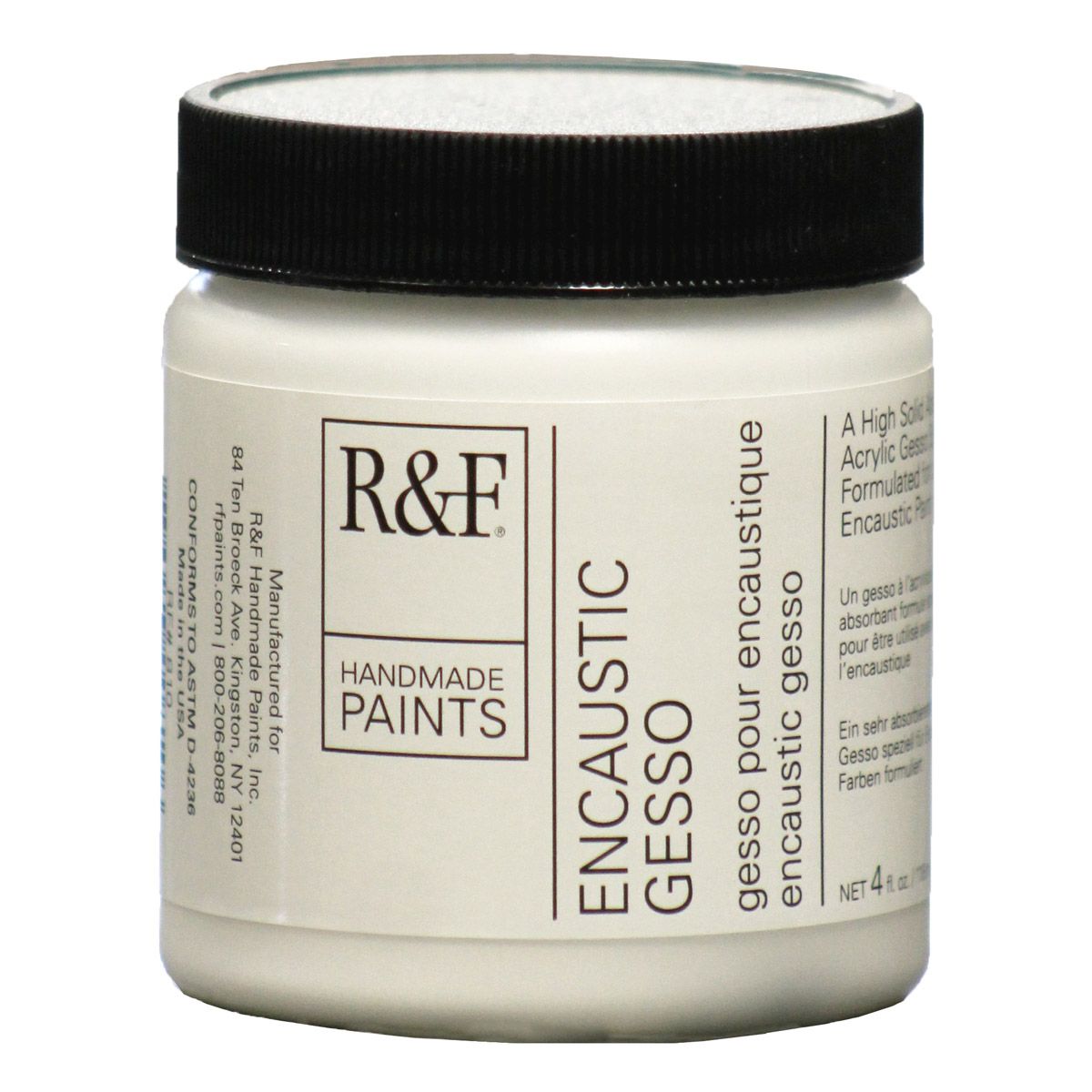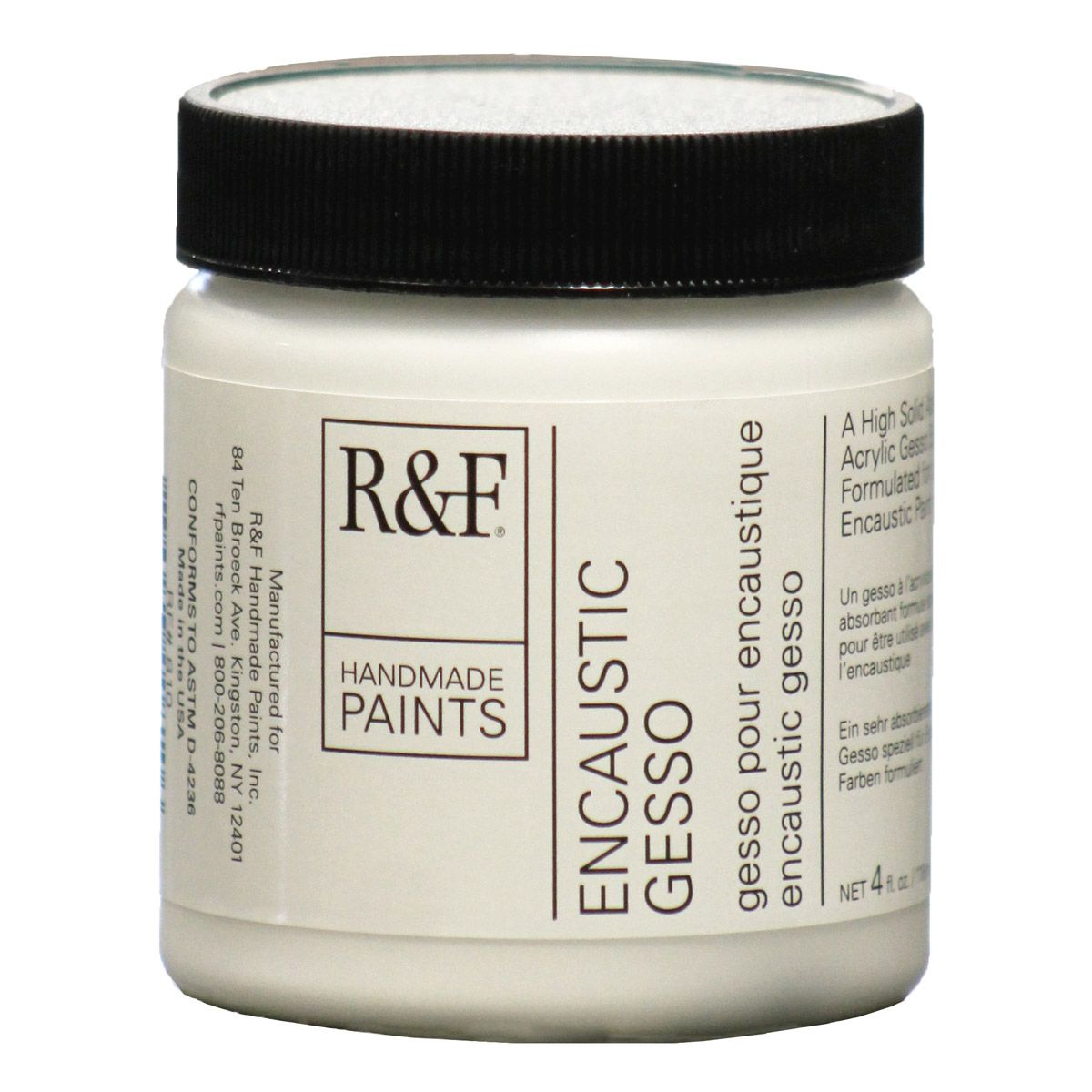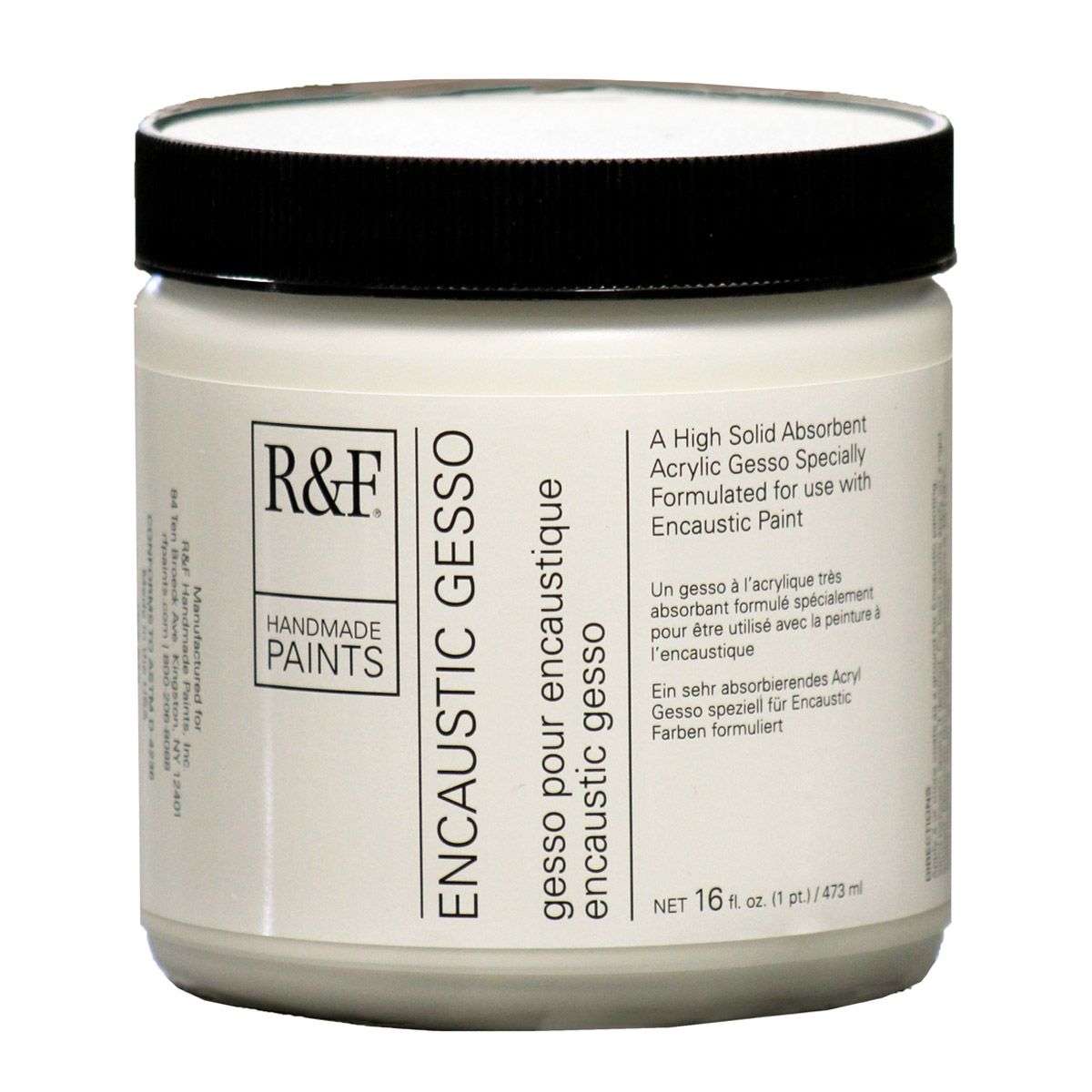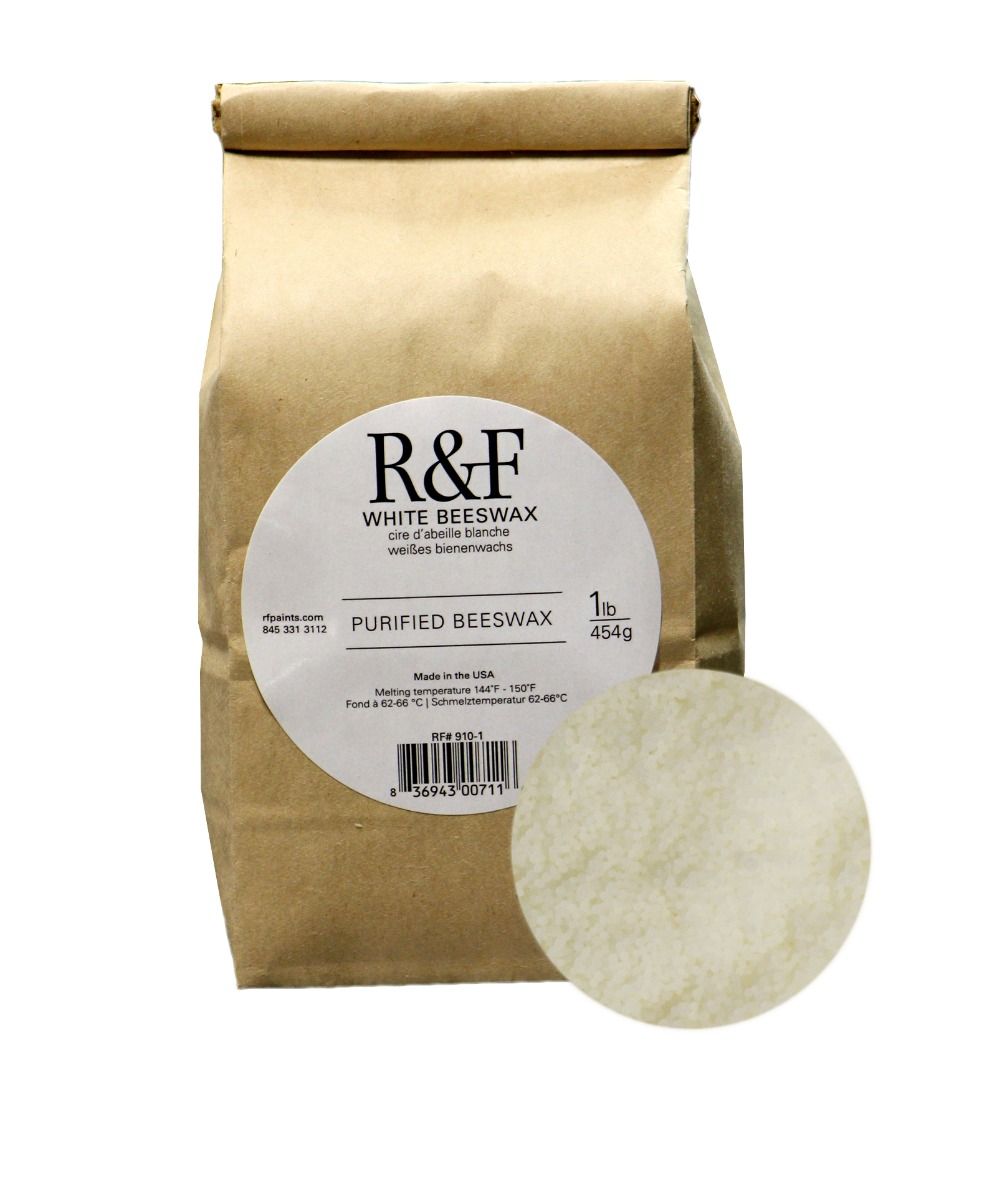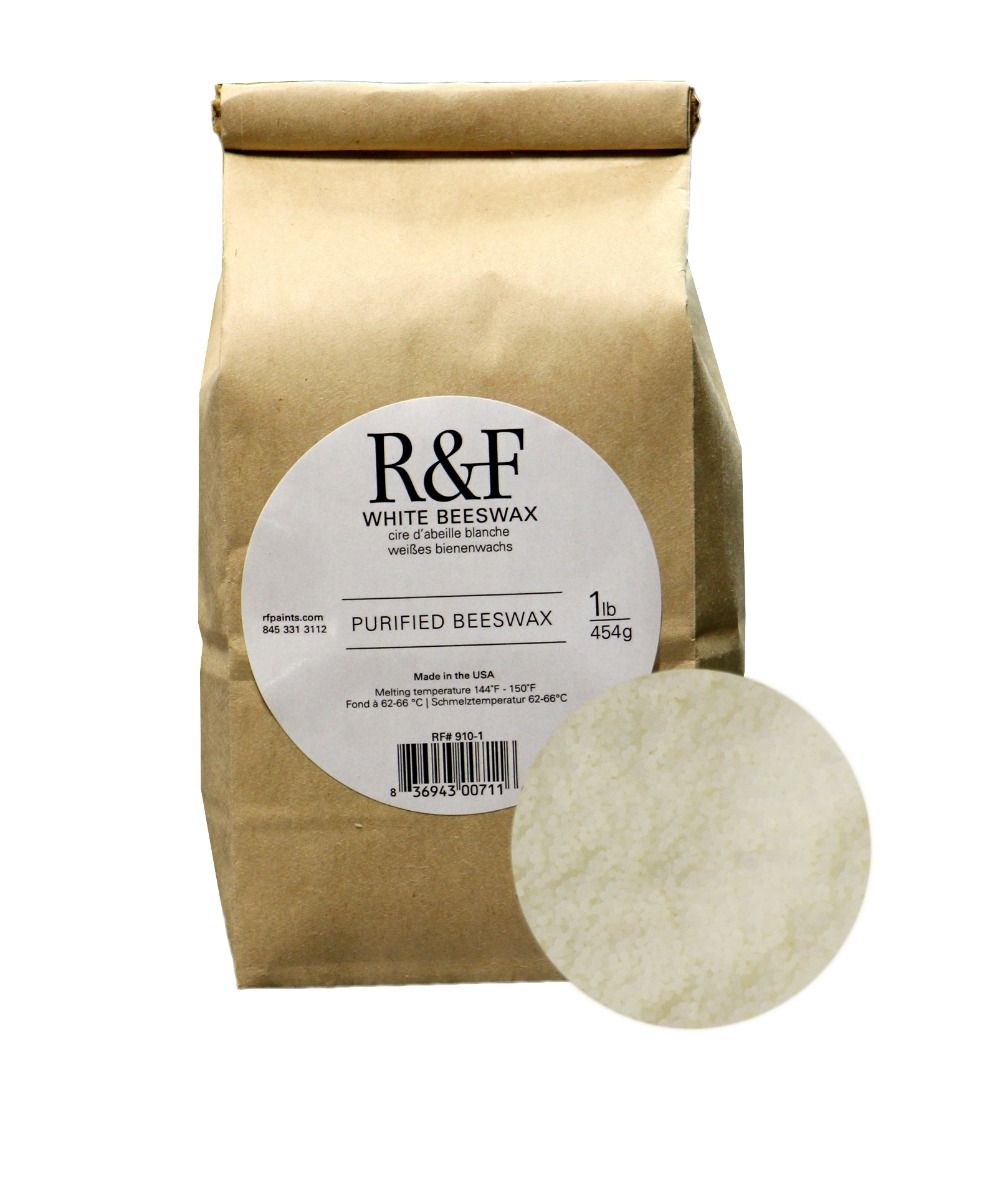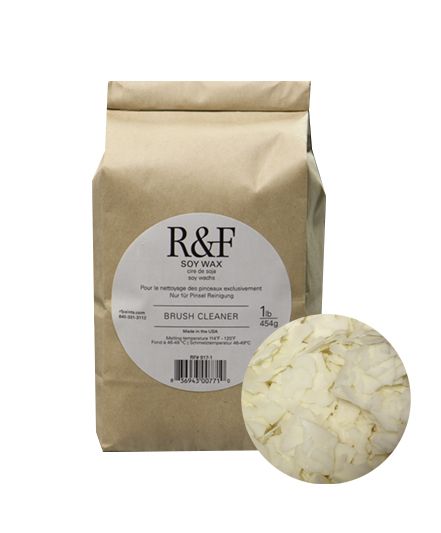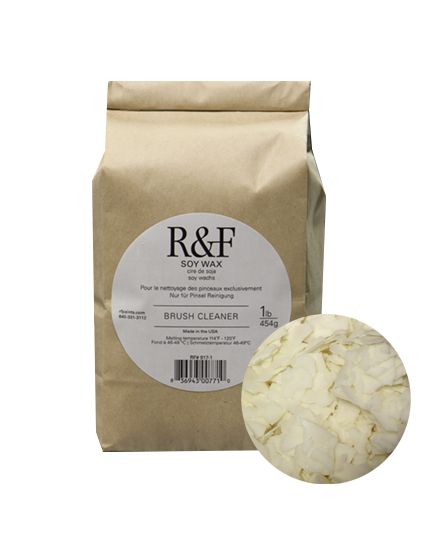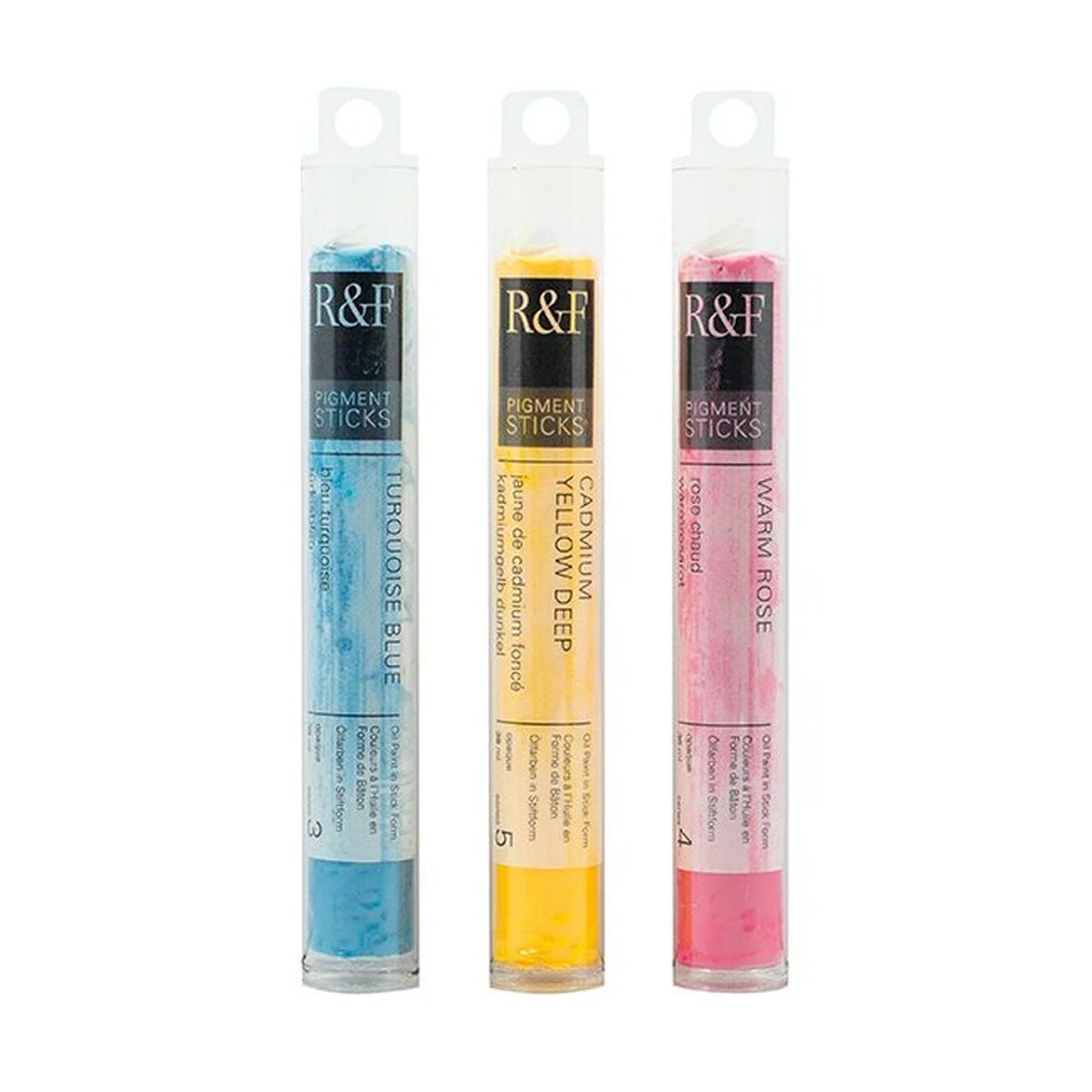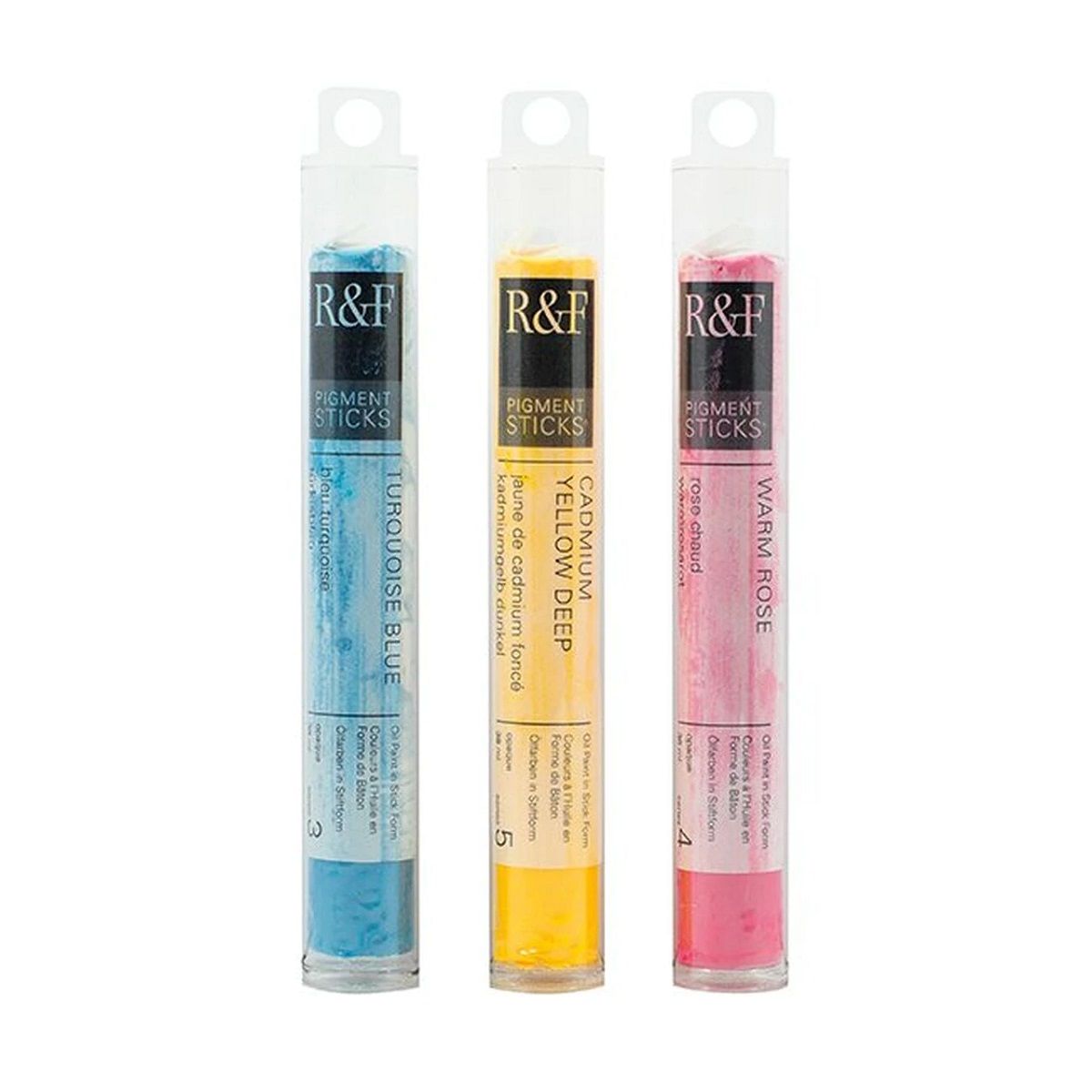R&F Encaustic Block, Green Earth 40ml
R&F Encaustic Paint Block - Green Earth, 40 ml
Soft delicate, muted green with slightly yellowish undertone. Excellent glaze for toning down bright colours and for giving shadow effect.
- Pigment Composition: PBr7-Burnt Sienna; PB29-Ultramarine [Blue]; PG18-Viridian
- Paint Lines: Encaustic Pigment Stick
- Opacity: Semi-Transparent
- Pigment Stick Drying Rate: Medium
- Classification: Synthetic Inorganic
- Chemical Composition: Transparent Iron Oxide, Viridian, Ultramarine Blue
- Safety Information: Conforms to ASTM D-4236
R&F Encaustic Paint Block - Green Earth, 40 ml
Soft delicate, muted green with slightly yellowish undertone. Excellent glaze for toning down bright colours and for giving shadow effect.
- Pigment Composition: PBr7-Burnt Sienna; PB29-Ultramarine [Blue]; PG18-Viridian
- Paint Lines: Encaustic Pigment Stick
- Opacity: Semi-Transparent
- Pigment Stick Drying Rate: Medium
- Classification: Synthetic Inorganic
- Chemical Composition: Transparent Iron Oxide, Viridian, Ultramarine Blue
- Safety Information: Conforms to ASTM D-4236
Pigment Name: PBr7-Burnt Sienna
Classification: Earth
Chemical Composition: Iron oxides
Properties
Burnt Sienna is a warm, mid-brown colour formed by burning the yellow-brown limonite clay called Raw Sienna. It ranges from semi-opaque to semi-transparent due to the combination of its opaque, red-brown mass tone and its transparent, orangey undertone. It is an excellent mixing complement for blues and greens and creates salmon or peach coloured tints when mixed with white. It can be useful for subduing bright colours and does not get chalky in dark mixtures.
Permanence
Burnt Sienna has good permanence and is considered one of the most versatile of the permanent pigments.
Toxicity
Burnt Sienna has no significant hazards.
History
Burnt Sienna has been used as a pigment since prehistoric times, but its current name came about during the Renaissance. It comes from the city of Siena, in Italy, and is short for terra di Siena, meaning earth of Siena. Sienna was famous for the mining and production of earth pigments from the Renaissance until World War II. Due to the depletion of clay deposits in Tuscany, Italian siennas now come from other areas, including Sicily and Sardinia.
Pigment Name:PB29-Ultramarine [Blue]
Classification: Synthetic Inorganic
Chemical Composition: Complex silicate of sodium and aluminum with sulfur
Properties
Ultramarine is the standard warm blue, a brilliant blue pigment that has the most purple and least green in its undertone. It has a moderate to high tinting strength and a beautiful transparency. Synthetic Ultramarine is not as vivid a blue as natural Ultramarine. Ultramarine dries slowly in oil and tends to produce clean, though granular, washes in watercolour. French Ultramarine mixes well with Alizarin colours in oil and watercolour form to create a range of purples and violets. It can dull when mixed with white in acrylic form, but mixes well with other colours. The shade varies based on manufacturer. Considered a great colour for glazes, it is not suitable for frescoing.
Permanence
Ultramarine has excellent permanence, although synthetic Ultramarine is not as permanent as natural Ultramarine. It may discolour if exposed to acid because of its sulfuric content.
Toxicity
Ultramarine has no significant hazards.
History
The name for this pigment comes from the Middle Latin ultra, meaning beyond, and mare, meaning sea, because it was imported from Asia to Europe by sea. It is a prominent component of lapis lazuli and was used on Asian temples starting in the 6th century. It was one of the most expensive pigments in 16th century Europe, worth twice its weight in gold, and so was used sparingly and when commissions were larger. Ultramarine is currently imitated by a process invented in France in 1826 by Jean Baptiste Guimet, making blue affordable to artists and extending the range of colours on their palettes.
Pigment Name: PG18-Viridian
Classification: Synthetic Inorganic
Chemical Composition: Chromium (III)-oxide dehydrate
Properties
Viridian is the standard green and is stable, powerful, and cold with an emerald green undertone. It has a transparent hue, good tinting strength, a dark masstone that can be almost black at full strength, and a slow drying time in oil form. Viridian is commonly replaced by the darker, more saturated, and staining Phthalo Greens, but its properties make it a necessary part of the palette of an experienced landscape painter.
Permanence
Viridian has excellent permanence, except in high-temperature work, and is highly valued as a glazing colour.
Toxicity
Viridian is slightly toxic.
History
Viridian’s name comes from the Latin viridis, meaning green. The process for manufacturing Viridian, or Transparent Oxide of Chromium, was patented by Guignet in Paris in 1859. However, it had actually been discovered by Pannetier and Binet in 1838. Viridian replaced Verdigris, which was reactive and unstable, and Emerald Green, which was a poisonous copper aceto-arsenite used as a rat poison in the sewers of Paris.
| Brand | R&F Encaustic Handmade Paints |
|---|---|
| Country of Manufacture | United States |
| Type of Store Credit value | Select |














